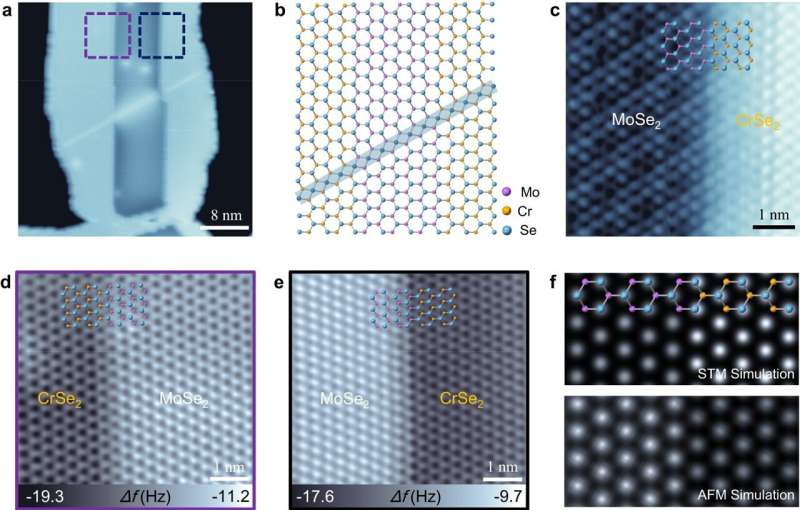This article has been reviewed according to Science X's editorial process and policies. Editors have highlighted the following attributes while ensuring the content's credibility:
fact-checked
peer-reviewed publication
trusted source
proofread
Researchers develop a novel strategy for growing two-dimensional transition metal dichalcogenides

National University of Singapore (NUS) researchers have developed a novel phase-selective in-plane heteroepitaxial strategy for growing two-dimensional transition metal dichalcogenides (2D TMDs). This approach provides a promising method for phase engineering of 2D TMDs and fabricating 2D heterostructure devices.
2D TMDs exhibit various polymorphic structures, including 2H (trigonal prismatic), 1T (octahedral), 1T′ and Td phases. These phases confer a range of properties such as superconductivity, ferroelectricity and ferromagnetism. By manipulating these structural phases, the rich physical properties of TMDs can be tuned, enabling precise control over their characteristics through what is known as phase engineering.
In this work, a research team led by Professor Andrew Wee from the Department of Physics under the NUS Faculty of Science, in collaboration with international partners, utilized molecular beam epitaxy (MBE) to grow molybdenum diselenide (MoSe2) nanoribbons as an in-plane heteroepitaxial template to seed the growth of H-phase chromium diselenide (CrSe2).
MBE is a technique for creating very thin layers of materials on a surface by depositing molecules one by one. This allows for the precise control of the composition, thickness and structure of the deposited layers at the atomic level.
Using ultra-high vacuum scanning tunneling microscopy (STM) and non-contact atomic force microscopy (nc-AFM) techniques, the researchers observed atomically sharp heterostructure interfaces with type-I band alignments and the characteristic defects of mirror twin boundaries in the H-phase CrSe2 monolayers. These mirror twin boundaries exhibited unique behavior within the confined one-dimensional electronic system.
The research findings have been published in the journal Nature Communications on 26 February 2024.
This research represents a continuation of the team's ongoing exploration into phase structure control and physical property studies of 2D materials.
Dr. Liu Meizhuang, the first author of the research paper, said, "We have also realized the phase-selective growth of H-phase vanadium diselenide using this in-plane heteroepitaxial template. This phase-selective in-plane heteroepitaxial method has the potential to become a general and controllable way for expanding the library of 2D-TMD phase structures, thereby advancing fundamental research and device applications of specific 2D phases."
Prof. Wee added, "The ability to control the phase of 2D lateral heterostructures opens many new opportunities in device applications."
More information: Meizhuang Liu et al, Phase-selective in-plane heteroepitaxial growth of H-phase CrSe2, Nature Communications (2024). DOI: 10.1038/s41467-024-46087-0
Journal information: Nature Communications
Provided by National University of Singapore





















